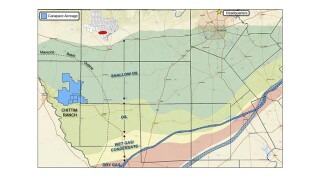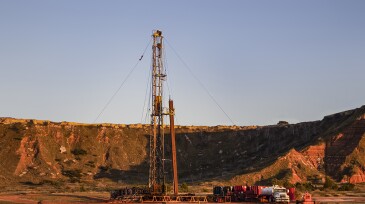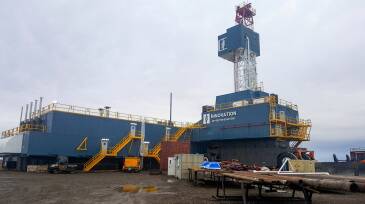Enhanced recovery
The objective of this microfluidic investigation is to identify and test two novel applications for magnetic fluids in porous media for subsurface oilfield applications.
This paper describes a study to design and implement an enhanced oil recovery project via a huff ’n’ puff using Y-grade injectant.
This study compares water-based chemicals that can be used for enhancing the oil recovery of shale-oil reservoirs, including surfactants, nanoparticles, and ketones.
-
This work explores the synergistic effects of smartwater in polymerflooding, surfactant/polymerflooding, carbonated waterflooding, and foam-assisted gas-injection.
-
Our industry has consistently demonstrated resilience, adaptivity, and creativity. In the era of industry transition to low-carbon operations, opportunities exist for selective EOR methods to revive and contribute. The selected papers in this feature include examples of innovative approaches for developing efficient EOR schemes and advanced modeling and optimization.
-
In this study, surfactants that can alter wettability or develop ultralow interfacial tension were identified through laboratory measurements for a target carbonate reservoir.
-
The authors of this paper present an application of a Bayesian framework for uncertainty assessment and efficient history matching of a Permian CO2 enhanced oil recovery field for reliable production forecast.
-
This paper describes the deployment of an ultradeep electromagnetic directional-resistivity instrument to map injection-water movement.
-
This paper shares details of 2 years of monitoring the first commingled updip smart water injector drilled in the Piltun area of the Piltun-Astokhskoye offshore oil and gas field.
-
Understanding the injected-water preferential paths is a key aspect of waterflood optimization in reservoirs characterized by strong vertical and areal heterogeneities. Devising specific work flows for such applications is important.
-
This paper discusses a waterflood optimization system that provides monitoring and surveillance dashboards with artificial-intelligence and machine-learning components to generate and assess insights into waterflood operational efficiency.
-
A leaner and wiser Weatherford seeks new Middle East contracts while growing margins and market share on existing business.
-
The future of the heavy-oil business in Alaska looks more promising than ever after a 2-year pilot delivers technical and economic success.













